October Is Hammer Country: The Gorgon (1964)
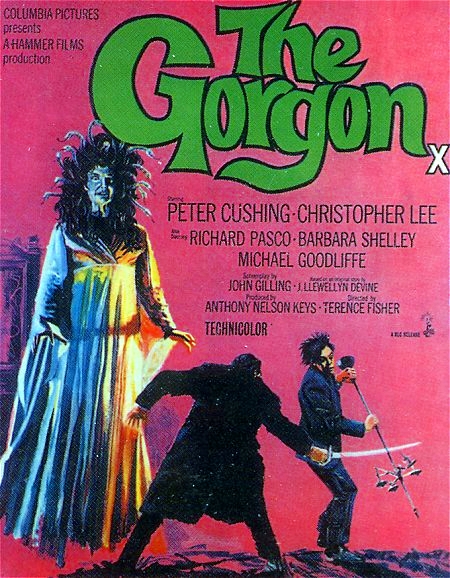 I love October, but it brings with it a major annoyance from popular movie websites: a deluge of click-bait lists with titles such as “10 Best Horror Films for Halloween,” “10 Best Underrated Horror Films,” and “10 Best Horror Films We Market Researched from Other 10 Best Horror Films Lists.” They’re tedious, show no deep thought about the genre or the season, and feature the same set of obvious picks. Plus, I have never seen one of these Top Halloween Movie lists include The Gorgon. Therefore, they all bear false witness.
I love October, but it brings with it a major annoyance from popular movie websites: a deluge of click-bait lists with titles such as “10 Best Horror Films for Halloween,” “10 Best Underrated Horror Films,” and “10 Best Horror Films We Market Researched from Other 10 Best Horror Films Lists.” They’re tedious, show no deep thought about the genre or the season, and feature the same set of obvious picks. Plus, I have never seen one of these Top Halloween Movie lists include The Gorgon. Therefore, they all bear false witness.
The Gorgon is Halloween movie perfection, and ranks with the 1958 Dracula as the Hammer film most fit for the ghoul season. It’s Gothic, has a classic — albeit unusual — monster, features a small European village beneath a beetling haunted castle, and stars both Peter Cushing and Christopher Lee. Plenty of Hammer films contain these elements. But what makes The Gorgon stand out for October is how much the dry, crisp, windy sensation of autumn blows through it. You can feel the arid wind each time it slams open a window or door. Dead leaves are strewn everywhere. The moon hides behind ever-scudding clouds. And there’s a sough on the breeze that sounds like a woman in the distance singing eerily (with electric organ accompaniment). It’s one of the studio’s most sumptuously beautiful productions and fulfills director Terence Fisher’s aim to craft his horror films in the model of dark fairy tales.
It’s also simply a fantastic movie with complex characters and psychology to make its designs mean something. Director Terence Fisher, the production team, and the insanely talented cast all outdid themselves on this one. The Gorgon doesn’t have the name recognition of a Dracula or a Frankenstein film, but it deserves to be better known — because I for one can’t imagine October going by without watching it.
Hammer moved rapidly through the classic movie monster catalog once they settled into Gothic horror, and by 1964 they were interested in finding new monsters. J. Llewellyn Devine came up with the idea of using a Greek mythological creature, the snake-headed Gorgon. He invented a new one called Megaera, the only survivor of the original three Gorgon sisters. (In the Perseus myth, the Gorgons are named Medusa, Stheno, and Euryale.) John Gilling, one of Hammer’s prolific directors, turned Devine’s treatment into a script, with uncredited rewrites from Anthony Hinds. Gilling wanted to direct the script himself, and was contemptuous of Hinds’s change and the final results. I understand his anger — but I disagree with his assessment of the movie.
The script of The Gorgon became the blueprint for what is essentially Hammer’s second werewolf movie. The Gorgon has normal human form during the day, and then the spirit of Megaera takes control and emerges during periods of the full moon. The setting isn’t the ancient world, but Hammer’s familiar spook-ground of a vague southern Germanic region around the turn of the century.
The village of Vandorf, sitting in the shadow of the abandoned Castle Borski, has been the site of a series of bizarre murders over the past seven years. The local constabulary under Inspector Kanof (Patrick Troughton) has disguised an odd aspect of the deaths, which is that the victims were all turned to stone. The main figure abetting the cover-up is Dr. Namaroff (Peter Cushing), head of Vandorf’s medical institute/asylum.
Unlike the usual “insta-stone” effect of looking a Gorgon in the face seen in other movies (i.e. Clash of the Titans), Megaera’s gaze petrifies her victims over hours, which is one of the more horrific aspects of the film. We watch this happen to Professor Jules Heitz (Michael Goodliffe), who comes to Vandorf to learn more about his son’s recent suicide. It’s an unnerving death scene.
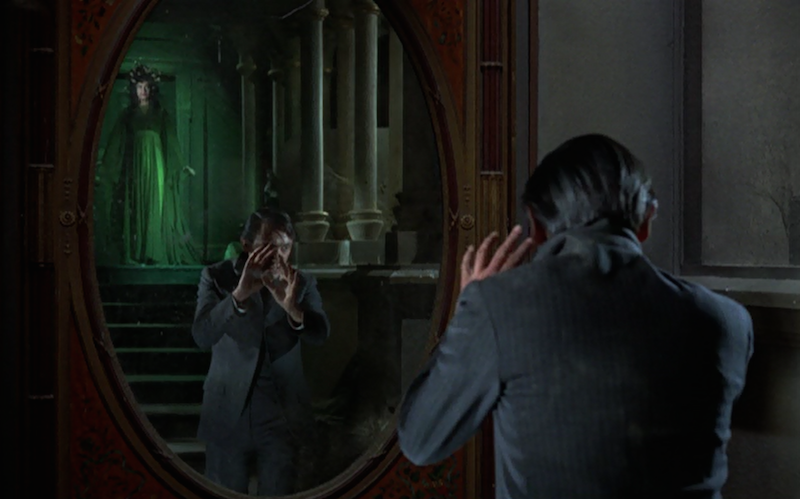 Dr. Namaroff’s reason for creating a deception around the Vandorf murders is the story’s principal mystery — at least from the POV of the characters investigating it, Jules Heitz’s son Paul (Richard Pasco) and Professor Meister (Christopher Lee) from the University of Leipzig. It’s exciting watching Professor Meister, who serves as the story’s level-headed Van Helsing figure, fit the pieces of the mystery together while Paul interferes with his emotional fits. But viewers will soon deduce what’s actually happening: Namaroff is infatuated with his young assistant, Carla Hoffman (Barbara Shelley), and all his plotting aims to protect her and everyone else from discovering that she is Megaera. There’s a weak red herring involving an insane woman at the institute, but the only way for the story to work dramatically is if Carla turns out to be the title monster.
Dr. Namaroff’s reason for creating a deception around the Vandorf murders is the story’s principal mystery — at least from the POV of the characters investigating it, Jules Heitz’s son Paul (Richard Pasco) and Professor Meister (Christopher Lee) from the University of Leipzig. It’s exciting watching Professor Meister, who serves as the story’s level-headed Van Helsing figure, fit the pieces of the mystery together while Paul interferes with his emotional fits. But viewers will soon deduce what’s actually happening: Namaroff is infatuated with his young assistant, Carla Hoffman (Barbara Shelley), and all his plotting aims to protect her and everyone else from discovering that she is Megaera. There’s a weak red herring involving an insane woman at the institute, but the only way for the story to work dramatically is if Carla turns out to be the title monster.
Namaroff is intent on keeping Carla under his control — a variant on chaining up the werewolf during the full moon — and away from Paul and Professor Meister. The conflict escalates when Paul and Carla fall in love, pushing Dr. Namaroff and his police stooges to sterner measures. This comes to a head in the only way it could: a sword vs. candelabra duel between Peter Cushing and Richard Pasco in a rotting castle.
Director Terence Fisher referred to his horror films as “fairy-tales for adults,” and this approach is what gives his Hammer movies a timeless sheen. The Gorgon is an exemplar of this. The only of Fisher’s films — and therefore Hammer horror films in general — that approaches it in dark storybook beauty is The Brides of Dracula (1960). The sets are astonishing works of nightmare loveliness, particularly the interior of Castle Borski and the leaf-strewn courtyard behind the Vandorf institute, where the film’s major suspense sequences occur. There’s a dynamic in the production design that’s different from other Hammer films: a number of the sets are purposely unremarkable, almost modern-domestic, such as Dr. Namaroff’s room and the sparse town hall where a rushed trial occurs to determine the cause of the first victim’s death. All these scenes in ordinary settings occur in daylight; when night arrives, the movie transforms into its spectacular dreamscape where the Gorgon may lurk right behind the characters.
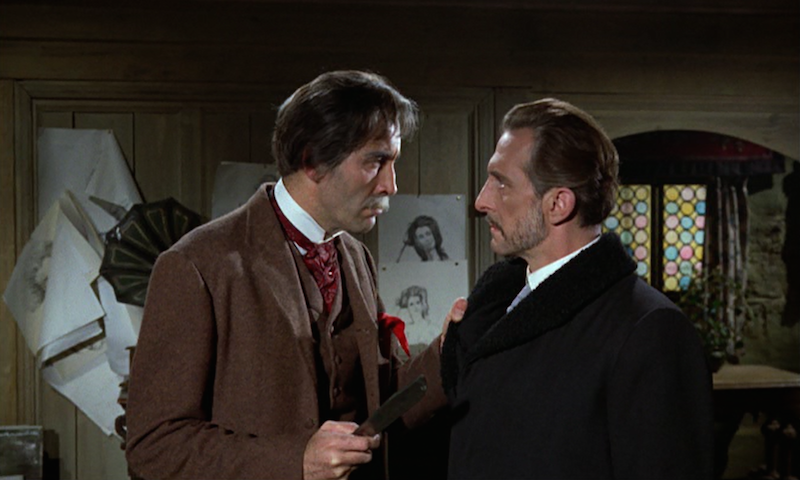 I won’t spend as much space gushing about Peter Cushing and Christopher Lee as I normally would. They’re both great and of course they’re great. The actors don’t share much screen time together, but their big clash when Namaroff tries to seize Carla from the Heitz house and Meister confronts him with the knife used to make a murder attempt on Paul is electric. Lee and Cushing’s natural power dynamic is great spectacle.
I won’t spend as much space gushing about Peter Cushing and Christopher Lee as I normally would. They’re both great and of course they’re great. The actors don’t share much screen time together, but their big clash when Namaroff tries to seize Carla from the Heitz house and Meister confronts him with the knife used to make a murder attempt on Paul is electric. Lee and Cushing’s natural power dynamic is great spectacle.
The role-swap between Cushing and Lee as hero and villain isn’t such a radical switch as it may at first seem. Cushing’s heroes like Van Helsing often have dark undercurrents, and Baron Frankenstein is a flat-out villain in The Curse of Frankenstein. Lee had already played the Mummy, Dracula, and the Frankenstein Monster, but Hammer also cast him in supporting parts as sympathetic, even heroic figures in The Man Who Could Cheat Death and Taste of Fear. Both performers are in a comfortable place with their parts: Lee enjoys doing the Sherlock Holmes detective work, while Cushing has one of his more subtly villainous parts that’s tougher to play than it looks because Peter Cushing makes everything look easy.
It’s the other principals in the cast, Richard Pasco and Barbara Shelley, who show how Hammer transcended expectations with The Gorgon. You rarely hear praise for the romantic couples who backed up the marquee-topping horror stars and character actors in Hammer movies. They were usually cast for their appearances. I love The Brides of Dracula, but the beautiful Yvonne Monlaur’s impenetrable accent and dazed performance are not a part of the film’s strengths. Likewise, Barry Andrews is a handsome slab of nothing in Dracula Has Risen from the Grave.
Pasco and Shelley, however, are performers with lengthy careers who were obviously cast because they’re just goddamn great actors. Richard Pasco was a Royal Shakespeare Company veteran famous for playing Jacques in As You Like It and Richard in Richard II on stage. Barabara Shelley was Hammer’s most reliable female star (earning her the nickname “The First Leading Lady of British Horror”) and has the acting chops Terence Fisher needed to unearth the deeper emotions he sought in all his films.
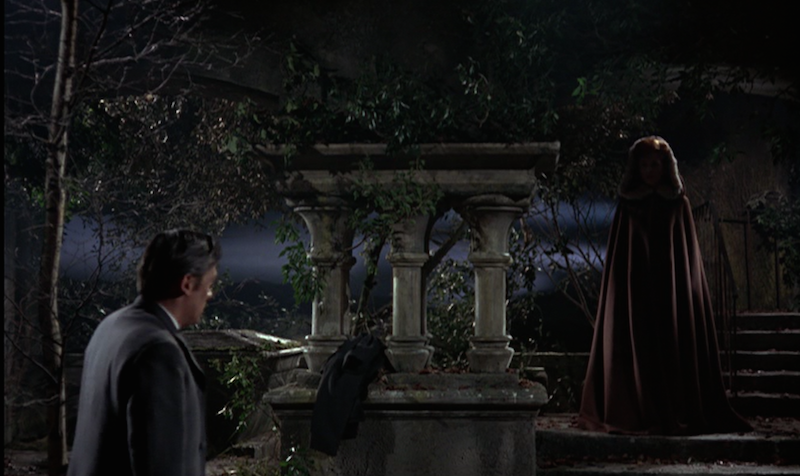 Pasco and Shelley are the beating heart of the movie, with Cushing and Lee as the icier intellects — both for good and bad — around them. Pasco plays Paul Heitz as tense, angry, and eventually desperate, and the way he smashes up against Lee as the stern voice of reason is fantastic to watch. Shelley handles the most difficult part: Carla Hoffman is a woman becoming subtly aware that something is deeply wrong around her, unable to confront that it is her. Shelley has excellent romantic chemistry with Pasco, but her best scenes are with Cushing, where she balances Carla’s dependence on Namaroff with a dawning realization of his darker manipulation of her. Shelley gave a number of great turns in Hammer films, but this is the best role the studio ever gave her and she’s marvelous.
Pasco and Shelley are the beating heart of the movie, with Cushing and Lee as the icier intellects — both for good and bad — around them. Pasco plays Paul Heitz as tense, angry, and eventually desperate, and the way he smashes up against Lee as the stern voice of reason is fantastic to watch. Shelley handles the most difficult part: Carla Hoffman is a woman becoming subtly aware that something is deeply wrong around her, unable to confront that it is her. Shelley has excellent romantic chemistry with Pasco, but her best scenes are with Cushing, where she balances Carla’s dependence on Namaroff with a dawning realization of his darker manipulation of her. Shelley gave a number of great turns in Hammer films, but this is the best role the studio ever gave her and she’s marvelous.
One of The Gorgon’s few weaknesses is the appearance of the Gorgon itself. Megaera remains largely hidden, shown in reflections off water or partially blocked behind pillars. As long as she’s obscured, Megaera can be a frightening, otherworldly presence. Fisher directs the hell out of the fright scenes, creating throat-clutching tension where characters try to resist the urge to turn to face the evil. Paul’s first encounter with Megaera, where he stumbles around a courtyard, unsure of what’s pursuing him, and glances the Gorgon’s visage in a stagnant pool, is masterfully staged.
But when Megaera emerges into full view, the large, barely mobile snakes on her head distract from the excellent Roy Ashton facial makeup on actress Prudence Hyman. Ashton wasn’t pleased with the final look either: “I didn’t agree with the design. Eventually it was taken out of my hands and given to Syd Person in special effects … I felt the snakes were too big.” Ashton wanted all of the Gorgon’s hair to appear alive with serpentine locks, which would have worked better, especially with the clever lighting creating the illusion of movement. At least the few bad shots can’t upset the film. Honestly, it’s tough to top Ray Harryhausen in the Gorgon department.
I’m going to close out both this article and my month of Hammer by shining a spotlight on the key figure in the Hammer horror story: Terence Fisher. Although one of the most influential directors in the genre, Fisher hasn’t received the level of discussion or name recognition as other horror auteurs like James Whale, George Romero, John Carpenter, and Wes Craven. Fisher was responsible for a sea change in Gothic horror in the 1950s, reviving it after its near extinction post-World War II. His energetic, colorful, and sexual re-imagining of vampires and the Frankenstein story laid the groundwork for all Gothic horror movies to come: we exist in the spooky castle of which Fisher was a prime architect.
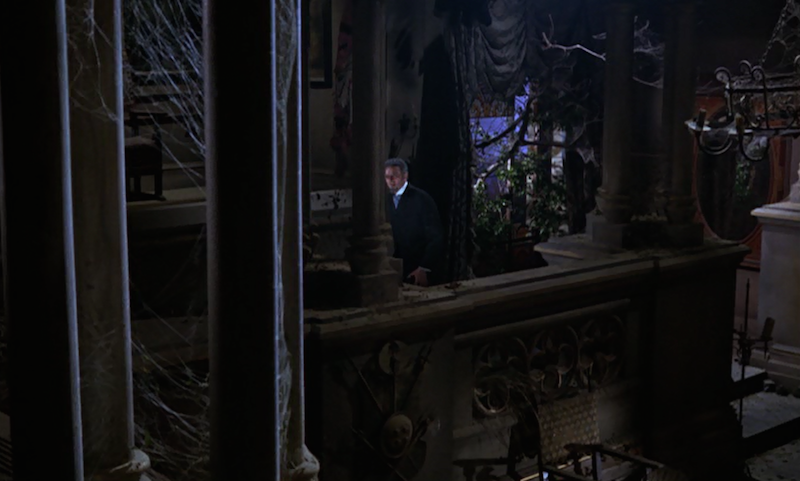 Fisher’s background in film was as an editor. His started directing in 1948 with low-budget thrillers and a number of “quota quickies” (inexpensive movies designed to meet a government-mandated quota for British productions). His filmography was already extensive by 1957, when Hammer assigned him to direct a color version of a Frankenstein script. This became The Curse of Frankenstein, the first of the Gothic movies that guided Hammer’s future.
Fisher’s background in film was as an editor. His started directing in 1948 with low-budget thrillers and a number of “quota quickies” (inexpensive movies designed to meet a government-mandated quota for British productions). His filmography was already extensive by 1957, when Hammer assigned him to direct a color version of a Frankenstein script. This became The Curse of Frankenstein, the first of the Gothic movies that guided Hammer’s future.
Fisher brought an editor’s eye to his films, always shooting with the thought of assembling the picture afterward. He worked closely with the camera department, which accounts for the rich appearance of his movies that other directors were soon imitating. Fisher was also loved by his actors because he was intrigued, more than anything, by the emotional content of his stories and trusted his actors to help him find it.
As with The Curse of the Werewolf, Fisher was proud of his achievement on The Gorgon. “It is a film that emphasizes the poetics of the fantastic, rather than the horror. I am very pleased with the characters on that film; they’re more complex than is usually the case and there’s more mystery lurking around them too, which can be pretty rare in this type of film, where far too often only the spectacle counts, rather than the psychological motivation leading up to that event.”
Tragically, Fisher had only eight more years of filmmaking and five films for Hammer left after The Gorgon. Poor health and limited mobility due to a series of automobile accidents in the late ‘60s forced him into early retirement when he became uninsurable. He directed his last film in 1972 (Frankenstein and the Monster from Hell, released in 1974) and died in 1980. But every October, he lives once more as my second favorite Halloween season director of all. (First is John Carpenter. Did I need to actually say that?)
Columbia has released The Gorgon on Region A Blu-ray from Mill Creek paired with another Terence Fisher Hammer film, The Two Faces of Dr. Jekyll.
Ryan Harvey is one of the original bloggers for Black Gate, starting in 2008. He received the Writers of the Future Award for his short story “An Acolyte of Black Spires,” and his stories “The Sorrowless Thief” and “Stand at Dubun-Geb” are available in Black Gate online fiction. A further Ahn-Tarqa adventure, “Farewell to Tyrn”, is currently available as an e-book. Ryan lives in Costa Mesa, California where he works as a professional writer for a marketing company. Occasionally, people ask him to talk about Edgar Rice Burroughs or Godzilla in interviews.
Conveniently, I do believe I picked up that double feature at the same time as my other recent Hammer acquisitions.
And after watching my first couple of Hammer movies (well, other than The Lost Continent, which is pretty atypical; and Lee’s Mummy), I suddenly have a much better understanding of the feel of Games Workshop’s Old World Warhammer setting.